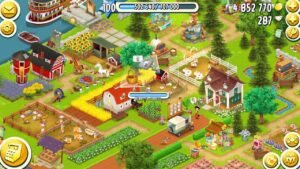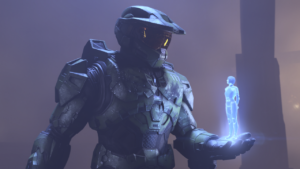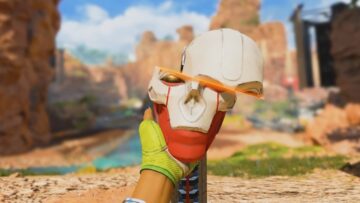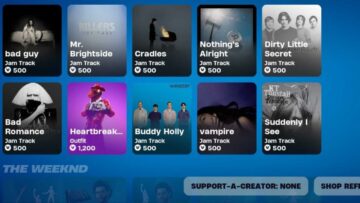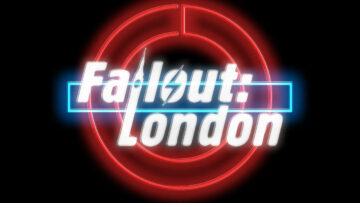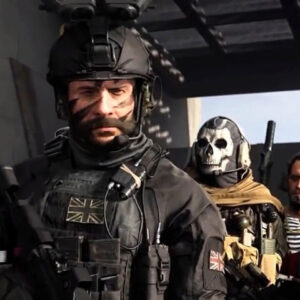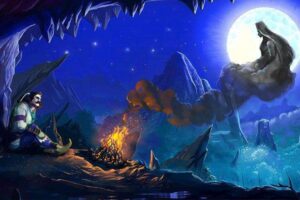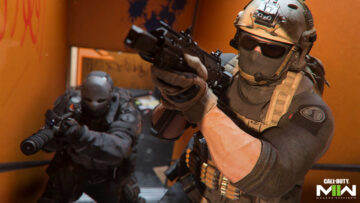As I type this, over 12,000 people are currently playing Left 4 Dead 2 on Steam. In the past month, the game has averaged just under 15,000 players daily, roughly three and five times more concurrent players than Dying Light 2 and Back 4 Blood, respectively, and each of those appears to have been successful in its own right.
That’s a heck of a lot of players for a game that came out almost 13 years ago, but if you’ve played it, you probably aren’t surprised. Launching exactly a year after its predecessor, Left 4 Dead 2 was an instant hit –even if the suddenness of the follow-up initially upset some fans. Over time, L4D2 became the ultimate platform for the series, swallowing up all of the original game’s content, introducing its own DLC, and inspiring more than a decade’s worth of community-made mods that help keep the co-op shooter alive even now.
I love Left 4 Dead, and I tend to enjoy many of the games it’s clearly inspired over the years –and there are a lot. Sensing there’s no end in sight to games inspired by Valve’s seminal co-op horde shooter, even as Left 4 Dead 3 doesn’t appear to be likely itself, I wanted to find out what makes Left 4 Dead such a milestone. More importantly, I wanted to hear it from the teams that have taken the baton from Valve and carried it in different directions, adding their own touches to the time-tested formula but always nodding back to that landmark original game.
“It keeps the right things simple,” Chet Faliszek told me earlier this month about Left 4 Dead. Faliszek worked on both Left 4 Dead games at Valve, and spends these days at his new studio, Stray Bombay, building a new L4D-inspired game: The Anacrusis. The co-op shooter places a lot of the foundational L4D gameplay in a sci-fi setting akin to the original Star Trek. “I still see games that greet you with confusing interfaces or a forced tutorial that gets in the way of inviting a friend who is new into your game. Left 4 Dead gets out of the way and lets you jump into the game and have some fun.”
Faliszek was addressing a question I posed to his and four other teams, each of them having worked on games that can reasonably be called Left 4 Dead descendents. Around the world, games like Systemic Reaction’s Second Extinction, Saber Interactive’s World War Z, Fatshark’s Warhammer: Vermintide, and Ghost Ship Games’ Deep Rock Galactic have roots that trail back to Left 4 Dead, some more than others, but all of them are undeniably inspired by it. His response was not uncommon among the group of devs I spoke to. In my interviews with the five studios, each team repeatedly cited two assets that Left 4 Dead maintains to this day: simplicity and replayability.
“Initially [World War Z] was supposed to be a completely different game that didn’t have any resemblance to L4D,” Saber Lead Game Designer Dmitry Grigorenko told me. “Funny thing is, when you make a co-op shooter game about zombies, there aren’t many ways that you can go. Somewhere in the middle of the development after another playtest we sat down together as a team and said, ‘Okay, our game is beginning to look a lot like L4D.”’ Grigorenko said the team began to study how Left 4 Dead’s famous AI Director behaved so that Saber could implement something similar.
This was a problem that grew in scope for the team, as it had to authentically capture the look of its source material, including the mountainous swarms of undead that far outnumber the horde sizes in Left 4 Dead. “Adding more zombies sounds simple on paper, but our zombie swarm system is incredibly complex. Zombies need to behave like a real crowd; you cannot achieve that just by increasing numbers. AI, animation and level design needs to work very well together to make sure that these sequences look like scenes in the movie.”
The AI Director was Valve’s name for the procedurally generated portions of each level. With just a few roughly one-hour campaigns in the game, Left 4 Dead wouldn’t mean much to anybody if it was over after just one time through the game, but the exceptional AI Director ensured it would live on for years to come by choosing how enemies spawn, where they spawn, and when to let up or stifle the player team all based on data the game would take in with every level. It would even slightly alter some paths through levels, which would catch seasoned vets off-guard at times.
If you’re breezing through a level, you might be met with the intimidating Tank zombie. If you’re limping to the safe room, maybe the game would give you a breather–assuming your teammates were there to clear the last few zombies off your back. There’s a lot going on under the hood, but on the surface, it manifests as simplistic and endlessly entertaining, but most importantly, it feels fair.
The pacing of Left 4 Dead has always been one of its strongest suits. I’ve played and reviewed a lot of games like Left 4 Dead, and in my experience, they can live or die on this single aspect. Finding that balance of exciting but not impossible pacing is the task every studio making games like it has to find for itself. It’s been what separates the good or great L4D-likes from the forgettable ones. Those that end up feeling random haven’t tended to last long. The teams I spoke to seemed to agree: The AI Director, when done well, has long been the fuel that powers the best of the genre.
“In other games, level designers are trying to achieve that by manually scripting every single AI spawn around each corner or gameplay arena,” said Grigorenko. “L4D innovated the approach and tried to do most of this work procedurally (with a significant level of manual scripting, of course). It is a very complex approach but the benefit is that your game is much more replayable in the end.”
Anders De Geer, the creative director behind the Warhammer: Vermintide series, which reimagines some of the L4D structure in a class-based fantasy setting, echoed similar talks in my conversation with his team, Fatshark. “Making a dynamic game that is controlled by an AI director is very different from more traditional game development,” De Geer said. “There are a lot of moving parts that need to work and if one part is not working the whole thing can collapse.”
But the goal is never just to replicate the Left 4 Dead experience. Though each of these games may resemble Valve’s classic, they all importantly have to provide their own spin on the formula. That includes rejecting bits of Left 4 Dead that may no longer work, too.
“The fact that there is no progression outside each campaign in L4D, while also a strength in its own way, was something we wanted to add.” Jonas Møller, lead programmer on Deep Rock Galactic, told GameSpot. In DRG, players suit up as dwarven miners and battle monstrous bugs while trying to extract precious resources from procedurally generated mines. “Upgrading your character is always fun, but we have been extra careful to make sure that your power level never grows so much that you cannot play with your friends who are just starting out.”
Left 4 Dead didn’t need to worry about balancing veteran players versus newbies, but in modern games, it’s often a major concern. Others agreed: A lack of character progression really sticks out in 2022. “Unless PvP is the main driver, maintaining a thriving player-base without a heavy emphasis on the progression system/metagame is more of an exception to the rule today,” said Simon Berry, lead game designer on Second Extinction.
In the co-op dino hunter, the team swapped out traditional campaign levels for a massive open world full of objectives, which Berry said was a point of emphasis for the team, even as it proved challenging. “You have to find solutions for all sorts of possibilities,” Berry explained. “The mindset for those used to non-co-op game development had to change from knowing where one player is and what they are doing at all times to preparing for where three players are–which can be quite complex at times.”
Interestingly, the Second Extinction team’s design philosophy around playtime stands in unique contrast to the others GameSpot spoke to. While other teams all said allowing for quick rounds is key, Berry said Systemic Reaction is going in the other direction. “We are actually operating on a philosophy of the longer the session, the better.” He added that the team is still experimenting with this approach as the game moves through Early Access.
Chatting with five teams began to paint a picture of the challenges of game development, even in cases such as this, when you have a standard-bearing example to point to. Each team had to learn for itself what to keep, what to reimagine, and what to ignore completely when building on the landmark co-op experience. The answers were rarely the same, except in the case of the game’s replayability. That makes a lot of sense when you play these five games, as they each emphasize that, too. Whatever else they’ve done to reshape the co-op horde shooter genre, they’ve essentially all sworn an oath to keep players guessing with each new round.
Still, is there something else that keeps Left 4 Dead so popular nearly a decade and a half later? For a fun thought experiment, imagine all of these games, and others like them, exist today and Left 4 Dead launches as a brand-new experience. Does its simplicity still make it a classic, or have players’ expectations changed so much now that it would be left sinking in a sea of similar games? It doesn’t offer upgradeable heroes or weapons. It doesn’t even have interchangeable cosmetics, which today is often the lifeblood of a game’s live-service economy.
Even now-ubiquitous mechanics like sprinting and aiming down sights are absent, which one developer told me simply weren’t in-demand back then. Players tend to want some level of customization, even if that’s merely superficial. Their dinosaur hunters, miners, and more can all be customized to each player’s liking. They expect some level of reward other than simply surviving the campaign, like new perks and skills in World War Z or Vermintide.
Left 4 Dead didn’t offer any of that. So why are 15,000 people still playing this game each and every month? As it turns out, it’s complicated. Players love the community-made mods, like those that bring new campaigns to the game each year. They adore the characters like Louis, Coach, and Ellis. They love the iconic campaigns like No Mercy and The Parish. And they love having experienced all of these things years ago, too–nostalgia doesn’t get all the credit, but it’s in the mix.
It does a lot of things right even by today’s standards, such as tight gunplay and an even tighter emphasis on teamwork. While it lacks some modern touches, it makes up for it in a reliable AI Director and a drop-in-and-go approachability that some teams make overly complicated. As for the teams GameSpot spoke to, each one sought to keep the genre’s immutable qualities intact, like replayability and adaptive pacing, while still seeking to make a name for themselves with clever building blocks scaled on top of that vital foundation. GameSpot asked each team to define the game’s legacy. Some words used include: polished, simple, classic, exceptional, replayable, and “aged like wine.”
Whether players are squashing bugs in a mine, chasing down aliens on a luxury spaceship, or dispatching bipedal rats, mutant dinosaurs, or zombies by the hundreds, the ghost of Left 4 Dead is frequently conjured, but never reborn. By invoking the spirit of Valve’s past, new teams are finding their own way through a genre still owing so much to its beloved trailblazer.
- Coinsmart. Europe’s Best Bitcoin and Crypto Exchange.
- Platoblockchain. Web3 Metaverse Intelligence. Knowledge Amplified. FREE ACCESS.
- CryptoHawk. Altcoin Radar. Free Trial.
- Source: https://www.gamespot.com/articles/what-made-left-4-dead-special-according-to-the-devs-making-games-like-it/1100-6503996/?ftag=CAD-01-10abi2f
- '
- "
- 000
- 2022
- About
- access
- achieve
- aged
- AI
- Aiming
- All
- Allowing
- among
- Animation
- Another
- approach
- around
- Assets
- Battle
- BEST
- Better
- blood
- bugs
- Building
- Campaign
- Campaigns
- case
- cases
- Catch
- challenges
- challenging
- change
- characters
- content
- Conversation
- could
- Creative
- credit
- crowd
- data
- day
- dead
- Design
- designer
- Developer
- Development
- Devs
- different
- Dinosaur
- Director
- down
- driver
- Early
- economy
- Endlessly
- entertaining
- experience
- experiment
- extract
- fair
- fans
- FANTASY
- formula
- Foundation
- Fuel
- full
- fun
- funny
- game
- gameplay
- Games
- Ghost
- goal
- good
- great
- Group
- having
- help
- How
- HTTPS
- Hundreds
- i
- image
- importantly
- Including
- increasing
- incredibly
- interactive
- Interviews
- IT
- jump
- Key
- large
- launches
- launching
- lead
- LEARN
- Level
- levels
- light
- Long
- love
- major
- MAKES
- Making
- May
- Mechanics
- milestone
- mine
- Miners
- mines
- Modern
- Month
- more
- movie
- needs
- numbers
- objectives
- offer
- Okay
- open
- operating
- original
- Other
- own
- paint
- Paper
- People
- philosophy
- picture
- platform
- play
- player
- players
- Playing
- Point
- Popular
- possibilities
- power
- progression
- Provide
- quick
- Rats
- RE
- reaction
- Resources
- response
- right
- room
- rounds
- s
- saber
- safe
- Said
- SEA
- seasoned
- sense
- Series
- setting
- significant
- similar
- Simple
- skills
- So
- Solutions
- Spin
- standards
- Star
- Star Trek
- Steam
- studio
- Study
- successful
- Surface
- system
- Talks
- Team
- The
- the world
- Through
- time
- Today
- together
- top
- traditional
- tutorial
- ultimate
- unique
- valve
- Versus
- veteran
- war
- What
- WHO
- Wine
- words
- Work
- worked
- working
- world
- worth
- year
- years
- Z





